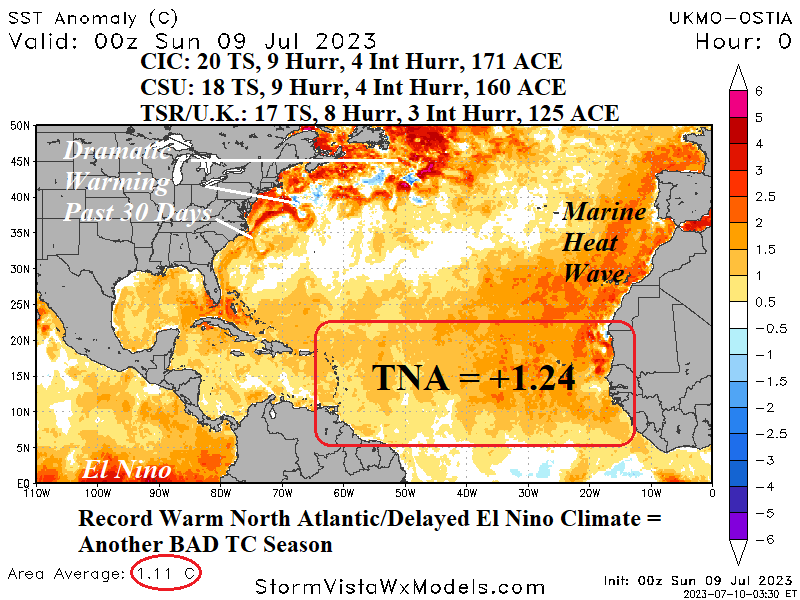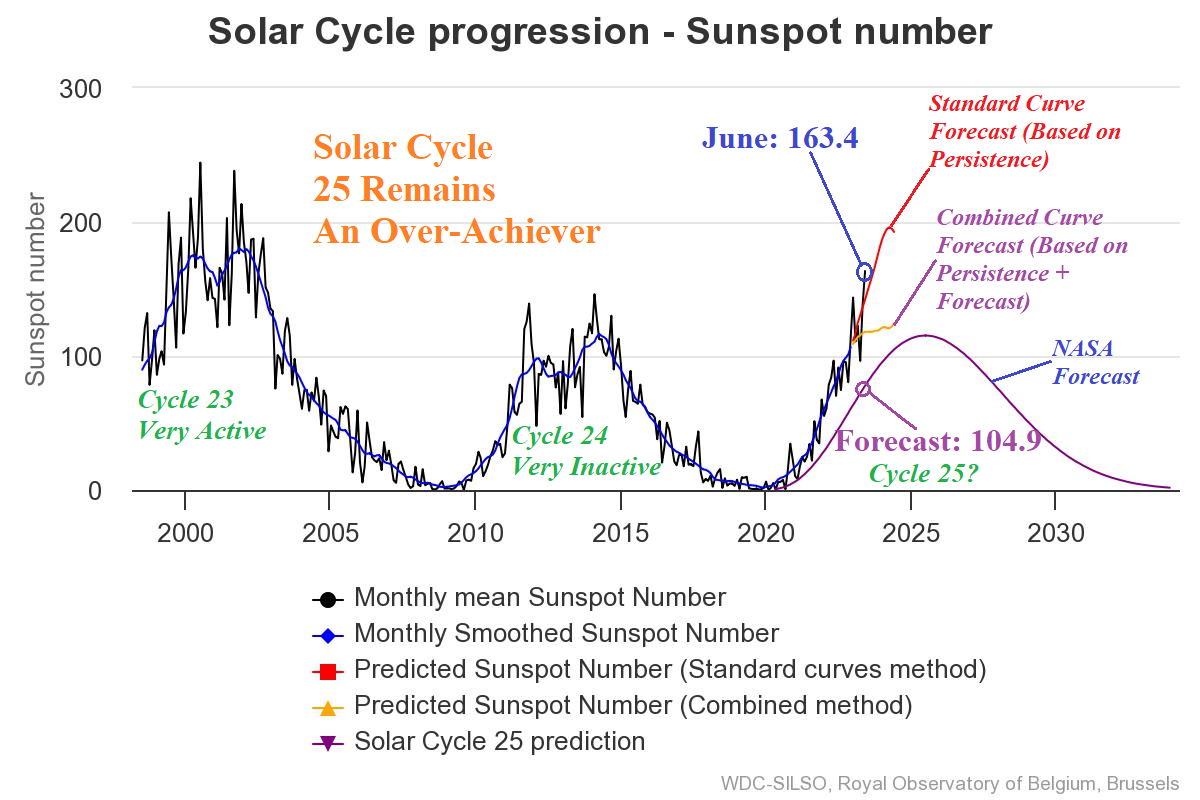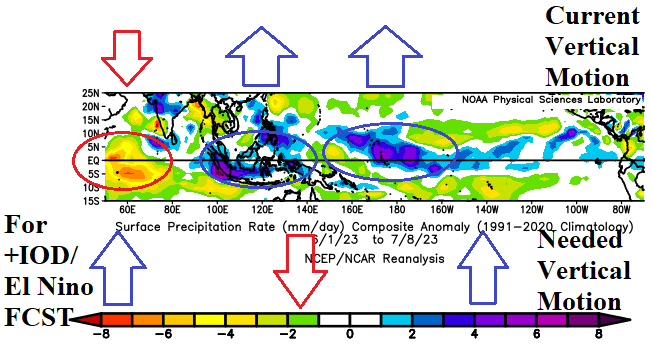
Significant Increase in Projected North Atlantic Basin 2023 Seasonal Hurricane Forecast
07/10/2023, 8:03 am EDT
Over-achieving Solar Cycle 25 Continues!
07/13/2023, 9:42 am EDTExecutive summary: The expected onset of positive phase Indian ocean Dipole by JUL/AUG 2023 is delayed. The issue is the vertical motion in the tropical Indian/Pacific Ocean(s) is not well-correlated with an El Nino climate which would drive +IOD evolution. Until the El Nino climate pattern develops (AUG/SEP), +IOD will be delayed and the longer the delay the more likely +IOD is not as strong as currently forecast by most dynamic models.


Fig. 1-2: The west and east tropical Indian Ocean basin SSTA analysis.
Synoptic discussion: SSTA observations in the western tropical Indian Ocean reveal patchy warm anomalies with a basin average of +0.19C (Fig. 1) while the eastern tropical basin is slightly warmer (+0.26C) featuring patchy warm and cool regions (Fig. 2). Consequently, the Indian Ocean Dipole (IOD) is neutral. Long-standing projections of the positive phase of IOD for Q3/2023 made from several months ago by most global SSTA forecast models are failing so far. By August, most global SSTA models including the International Multi-model Ensemble (IMME) indicate a fortified +IOD pattern featuring cool SSTA northwest of Australia and very warm SSTA off the Northeast Africa Coast (Fig. 3). The tropical rainfall pattern since June 1st identifies the reason why +IOD is not forming. Note the very dry pattern in the western tropical Indian Ocean caused by subsidence in the upper atmosphere (Fig. 4). During a +IOD pattern, very warm SSTA in this region would cause the opposite condition…convection and heavy rain. The wet anomalies since June 1st are across Indonesia and near the Dateline where enhanced rising vertical motion is present. Normally, the SSTA pattern is cooling in this region once El Nino forms and subsidence takes over limiting rainfall, and that pattern has not emerged (yet). Enhanced vertical motion leading to convective rains when El Nino is present is usually pronounced in the eastern equatorial Pacific and that pattern is weak. The vertical motion in the tropics from the Indian Ocean and across the Pacific Ocean identifies while the global climate is not in an El Nino phase while oceanic El Nino formed last month.

Fig. 3: The IMME global SSTA forecast for August 2023 identifying a fortified El Nino and +IOD regime.

Fig. 4: Vertical motion in the Indian/Pacific Ocean tropics associated with anomalous precipitation since June 1st and the vertical motion needed to verify the August 2023 SSTA forecast.
IOD forecast: Onset of +IOD will occur once an El Nino climate pattern has generated and shifted vertical motion patterns in the tropical Indian/Pacific Ocean(s). Earliest +IOD onset is in August and could be delayed until September. A delayed +IOD likely lowers the risk of a strong +IOD regime. Evolution of +IOD/El Nino by late Q3/2023 should lead to a drier climate for Southeast Asia, Indonesia, and Australia while Northeast Africa trend is much wetter. A stronger +IOD would weaken the India wet monsoon, a weaker +IOD leaves India wetter.
![Climate-Impact-Company-logo-sm[1]](https://climateimpactcompany.com/wp-content/uploads/2023/08/Climate-Impact-Company-logo-sm1.png)
